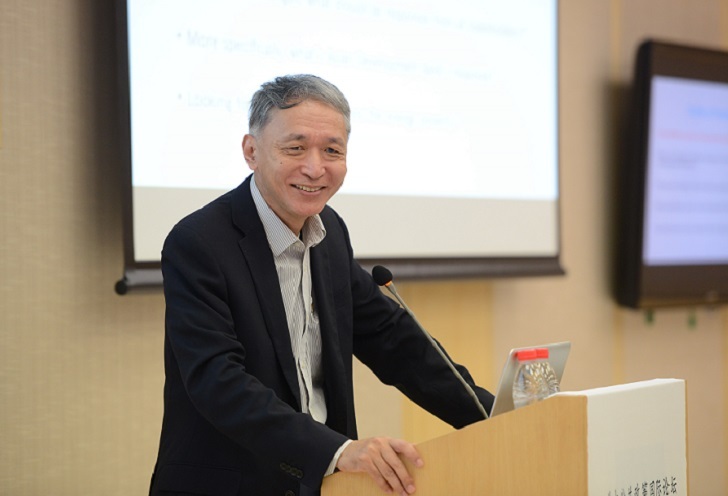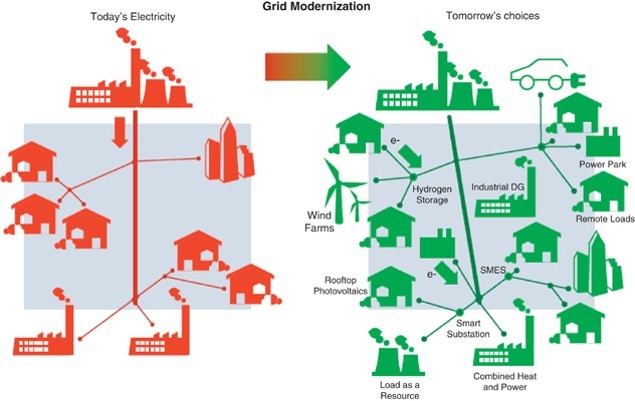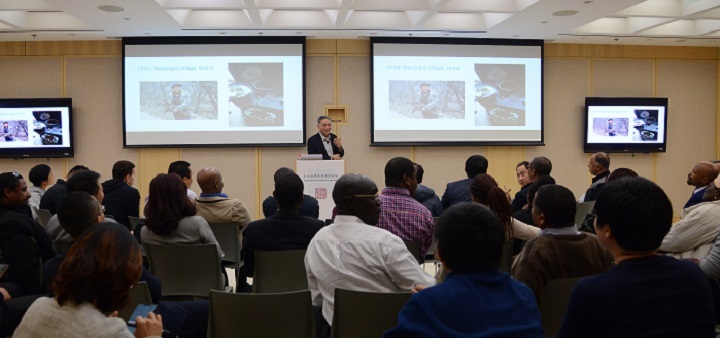Executive Education
sidenav header backgroundFuture of energy systems: Implications and opportunities for developing countries

Dr Zhai Yongping, Chief of Energy Sector Group, Asian Development Bank, responsible of overall energy policy coordination and technical support, presented the topic of Future of energy systems: Implications and opportunities for developing countries, to the colleagues of governmental officials from the developing countries and international students of Yenching Academy, on 18th November, 2018 at Peking University Public Policy Forum International. Professor FU Jun, Chair of the forum and academic dean of the Institute of South-South Cooperation and development, hosted the event.
Looking energetic as an energy expert, Dr Zhai offered an excellent presentation in accordance with his expertise, he illustrated the energy we consume is assessed based on the following trilemma: security, energy equity and environmental sustainability.
He said, the Paris Agreement needs to be abide by all member countries to ensure that the energy sector provides greener energy and that makes it better option than fossil fuels. But the question we may all want to understand is why energy green? In the past three decades, research and development in green energy has exploded, yielding hundreds of promising new technologies that can reduce our dependence on coal, oil, and natural gas.
Green energy comes from natural sources such as sunlight, wind, rain, tides, plants, algae and geothermal heat. These energy resources are renewable, meaning they are naturally replenished. In contrast, fossil fuels are a finite resource that take millions of years to develop and will continue to diminish with use.
Renewable energy sources also have a much smaller impact on the environment than fossil fuels, which produce pollutants such as greenhouse gases as a by-product, contributing to climate change. Gaining access to fossil fuels typically requires either mining or drilling deep into the earth, often in ecologically sensitive locations.
Green energy, however, utilizes energy sources that are readily available all over the world, including in rural and remote areas that don't otherwise have access to electricity. Advances in renewable energy technologies have lowered the cost of solar panels, wind turbines and other sources of green energy, placing the ability to produce electricity in the hands of the people rather than those of oil, gas, coal and utility companies.

Green energy can replace fossil fuels in all major areas of use including electricity, water and space heating and fuel for motor vehicles. Research into renewable, non-polluting energy sources is advancing at such a fast pace, it is hard to keep track of the many types of green energy that are now in development. Here are six of the most common types of green energy:
Solar power - The most prevalent type of renewable energy, solar power is typically produced using photovoltaic cells, which capture sunlight and turn it into electricity. Solar energy is also used to heat buildings and water, provide natural lighting and cook food. Solar technologies have become inexpensive enough to power everything from small hand-held gadgets to entire neighborhoods.
Wind power - Air flow on the earth's surface can be used to push turbines, with stronger winds producing more energy. High-altitude sites and areas just offshore tend to provide the best conditions for capturing the strongest winds. According to a 2009 study by the Proceedings of the National Academy of Sciences of the United States of America (PNAS), a network of land-based, 2.5-megawatt wind turbines in rural areas operating at just 20% of their rated capacity could supply 40 times the current worldwide consumption of energy.
Hydropower - Also called hydroelectric power, hydropower is generated by the Earth's water cycle, including evaporation, rainfall, tides and the force of water running through a dam. Hydropower depends on high precipitation levels to produce significant amounts of energy.
Geothermal energy - Just under the earth's crust are massive amounts of thermal energy, which originates from both the original formation of the planet and the radioactive decay of minerals. Geothermal energy in the form of hot springs has been used by humans for millennia for bathing, and now it's being used to generate electricity. In North America alone, there's enough energy stored underground to produce 10 times as much electricity as coal currently does.
Biomass - Recently-living natural materials like wood waste, sawdust and combustible agricultural wastes can be converted into energy with far fewer greenhouse gas emissions than petroleum-based fuel sources. That's because these materials, known as biomass, contain stored energy from the sun.
Biofuels - Rather than burning biomass to produce energy, sometimes these renewable organic materials are transformed into fuel. Notable examples include ethanol and biodiesel. Biofuels provided 2.7 percent of the world's fuels for road transport in 2010, and have the potential to meet more than 25 percent of world demand for transportation fuels by 2050. Therefore, the world has to decide to go for the best energy that can change the world for the better.
According to Dr Zhai, the top ten countries that have clean electricity are Denmark, Switzerland, Sweden, Netherlands, United Kingdom, Slovenia, Germany, New Zealand, Norway and France. This is a worrisome situation considering that most developing countries do not have clean energy. Talking about China, Dr Zhai commended China for her achievements in the past forty years as almost every household in China has access to electricity. However, he was worried that over 450 million Chinese still use unclean energy for cooking which can result into endopollution. This is not the only problem for China but almost all developing countries.
He proposed that his vision for a cleaner energy shall create a proper renewable energy, energy efficiency and energy conservation. He feels that there are high chances that countries can ensure the possibility of having better energy and turning people from consumers to prosumers. In conclusion, the energy expert, decried that there is much more that can be done to find cheaper and affordable source of energy.

By Donasius Pathera







